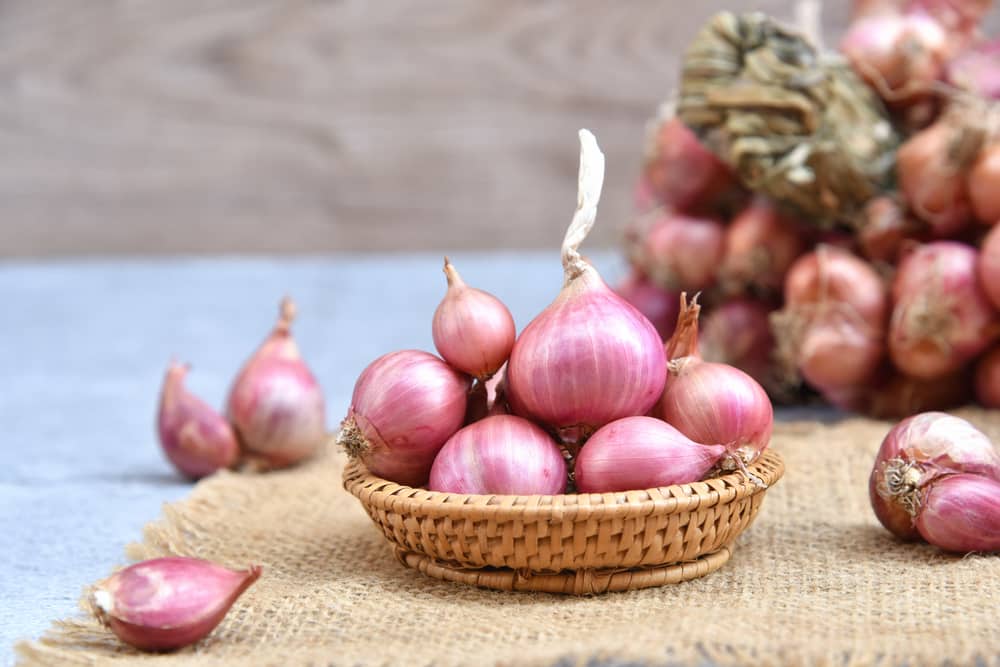
There are different types of onions out there, and it’s needless to say that every category has different flavors. That being said, shallots are one of the most popular ones, but people often ask, “why are shallots so expensive?” Truth be told, shallots are really expensive, and we are sharing the reasons below!
Shallots – What Are These?
Shallots are a variety of onions. They are considered the cousin of chives, garlic, leeks, or Chinese onion. They are native to southwest Asia and Central Asia, but they are now readily available in the East Mediterranean and India. Shallots are widely used for cooking, but some people also pickle them. Moreover, the shallots are sliced and deep-fried, which are then used as a condiment that is consumed with porridge. As far as the flavor is concerned, they taste like regular onions, but it tends to be mild.
Shallots can be stored in the dry and cool area for over six months, while dried and chopped shallots are available in supermarkets. In different parts of the world, red shallots are common, but red is famous in Europe, while grey shallots are common in southern France. If you have clear information about shallots, let’s see why shallots are so expensive.
Why Are Shallots So Expensive?
There are multiple reasons behind the high price of shallots. To begin with, shallots aren’t planted and grown in America because of the weather conditions. That being said, the United States has to import shallows which is the foremost reason behind high prices. In particular, shallots only grow well in the warm temperature, reducing the growth availability to less than four million tons (yes, it’s the global products, and it’s less). Given the less availability, the prices are increased.
In the majority of cases, shallots are grown in Asia and Mexico. Similarly, when shallots are imported from Mexico, there are high tariffs implemented by the American government, which increases the price. In addition, it also limits the availability of these special onions. So, these are two reasons behind the high price of shallots.
Alternatives To Shallots
When it comes down to shallots, they are expensive (it’s no secret, after all). However, if you want to use shallots and replicate a similar flavor, we are sharing some affordable alternatives to shallots, such as;
1. Yellow Onions
This is the best alternative to shallots, and it’s suitable for cooking purposes. Yellow onions can easily replicate the flavor of shallots, but they might not be as accurate as shallots. However, you have to be mindful about how many yellow onions you use because yellow onions are bigger than shallots. For this reason, you can use around half yellow onion in place of one shallot. Yellow onions are reasonably priced and are readily available in grocery stores.
2. Red Onions
If you don’t want to use yellow onions, red onion is also an amazing option for substituting shallots. In particular, red onions can be sliced in thin form and used in salads in place of shallots. However, it’s essential to add that red onion has a spicier flavor as compared to the shallot. That being said, it’s suggested to soak the onions for five minutes (use cold water for soaking) before you use them. Soaking will actually help eliminate the onion odor and reduce the spiciness.
3. Green Onions
The green onions are also known as scallions, and it works as a great alternative to shallots. When it comes down to scallions, they are suitable for cooking as well as raw usage. However, you can only use the white part and chop it in place of shallots. To illustrate, you need to use the white part of one green onion to replace two tablespoons of chopped shallots.
4. Leeks
This is the last alternative to shallots, and it’s suggested to use leeks in the recipe where you have to cook shallots. Leeks will give the garlic-like and delicate flavor, which helps replicate the shallots’ flavor. As far as the substitution amount is concerned, you can use the light green and white part of one leek to replace one cup of chopped shallots. On top of everything, leeks are readily available and have an economical price tag!